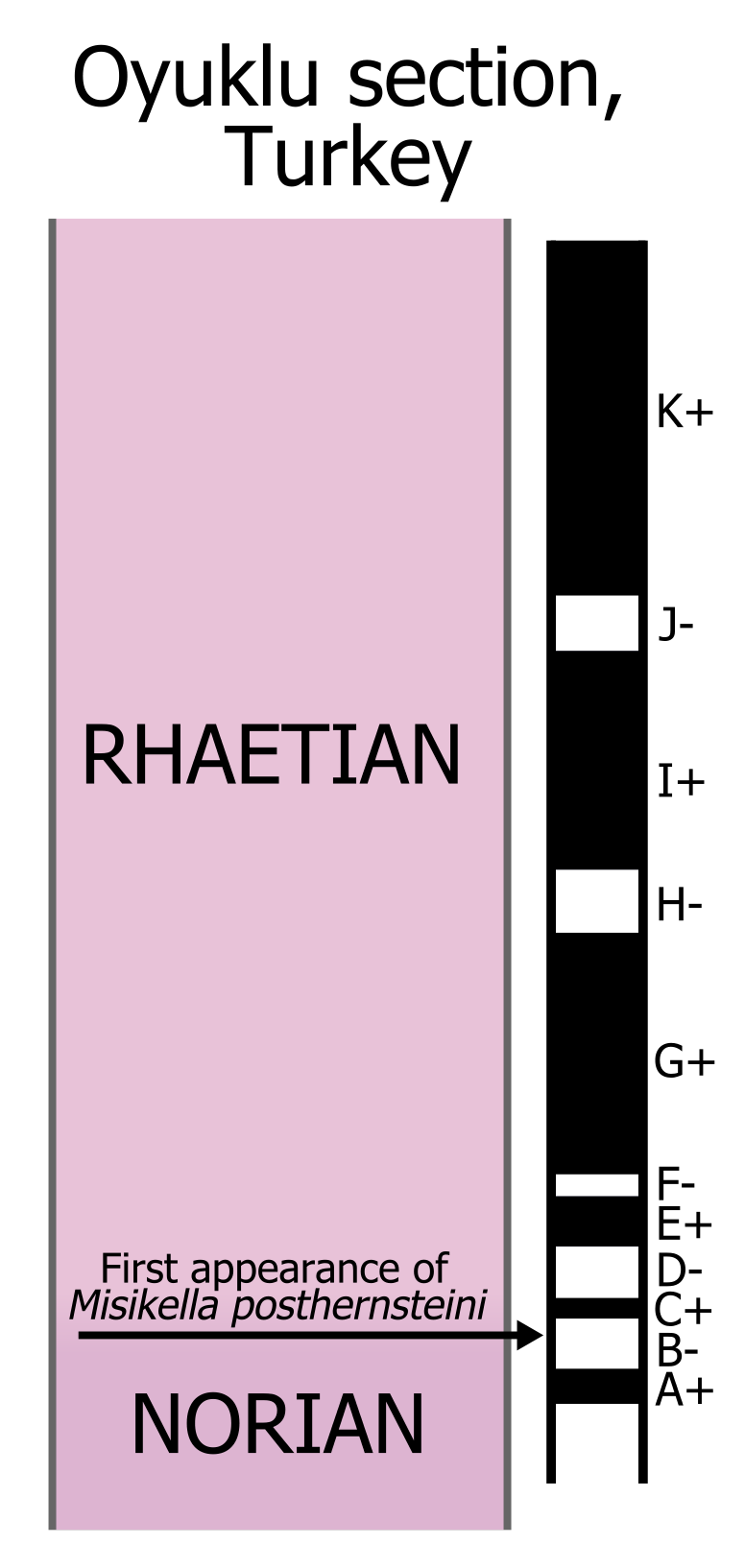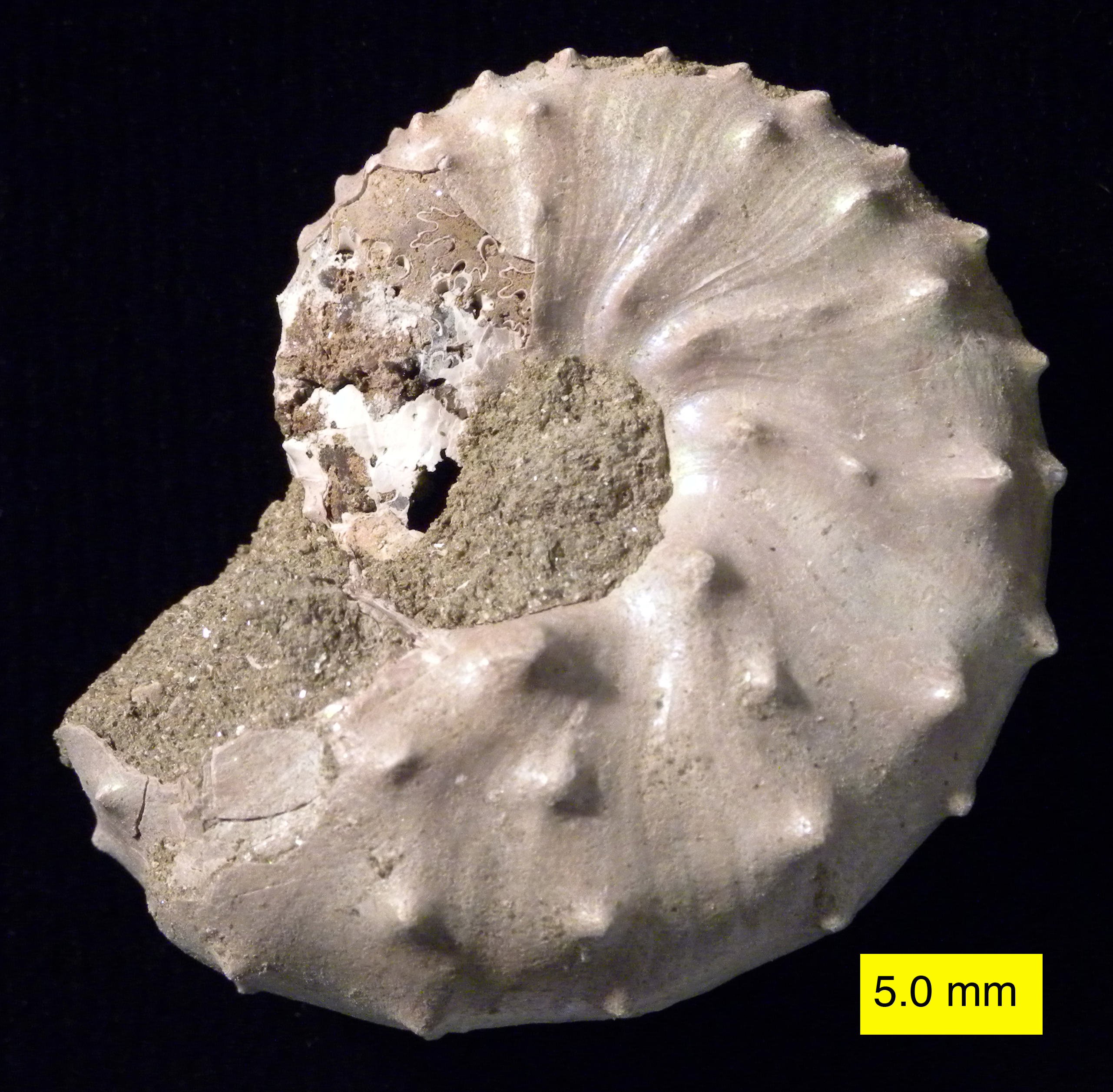|
Neoplesiosauria
The Plesiosauria (; Greek: πλησίος, ''plesios'', meaning "near to" and ''sauros'', meaning "lizard") or plesiosaurs are an order or clade of extinct Mesozoic marine reptiles, belonging to the Sauropterygia. Plesiosaurs first appeared in the latest Triassic Period, possibly in the Rhaetian stage, about 203 million years ago. They became especially common during the Jurassic Period, thriving until their disappearance due to the Cretaceous–Paleogene extinction event at the end of the Cretaceous Period, about 66 million years ago. They had a worldwide oceanic distribution, and some species at least partly inhabited freshwater environments. Plesiosaurs were among the first fossil reptiles discovered. In the beginning of the nineteenth century, scientists realised how distinctive their build was and they were named as a separate order in 1835. The first plesiosaurian genus, the eponymous ''Plesiosaurus'', was named in 1821. Since then, more than a hundred vali ... [...More Info...] [...Related Items...] OR: [Wikipedia] [Google] [Baidu] |
Plesiosaurus
''Plesiosaurus'' (Greek: ' ('), near to + ' ('), lizard) is a genus of extinct, large marine sauropterygian reptile that lived during the Early Jurassic. It is known by nearly complete skeletons from the Lias Group, Lias of England. It is distinguishable by its small head, long and slender neck, broad turtle-like body, a short tail, and two pairs of large, elongated paddles. It lends its name to the order Plesiosauria, of which it is an early, but fairly typical member. It contains only one species, the type species, type, ''Plesiosaurus dolichodeirus''. Other species once assigned to this genus, including ''P. brachypterygius'', ''P. guilielmiimperatoris'', and ''P. tournemirensis'' have been reassigned to new genera, such as ''Hydrorion'', ''Seeleyosaurus'' and ''Occitanosaurus''. Discovery The first complete skeleton of ''Plesiosaurus'' was discovered by early paleontologist and fossil hunter Mary Anning in Sinemurian (Early Jurassic)-age rocks of the lower Lias Group in Dec ... [...More Info...] [...Related Items...] OR: [Wikipedia] [Google] [Baidu] |
Peloneustes
''Peloneustes'' (meaning "mud swimmer") is a genus of pliosaurid plesiosaur from the Middle Jurassic of England. Its remains are known from the Peterborough Member of the Oxford Clay Formation, which is Callovian in age. It was originally described as a species of ''Plesiosaurus'' by palaeontologist Harry Govier Seeley in 1896, before being given its own genus by naturalist Richard Lydekker in 1889. While many species have been assigned to ''Peloneustes'', ''P. philarchus'' is currently the only one still considered valid, with the others moved to different genera, considered '' nomina dubia'', or synonymised with ''P. philarchus''. Some of the material formerly assigned to ''P. evansi'' have since been reassigned to ''"Pliosaurus" andrewsi''. ''Peloneustes'' is known from many specimens, including some very complete material. With a total length of , ''Peloneustes'' is not a large pliosaurid. It had a large, triangular skull, which occupied about a fifth of its body length. The ... [...More Info...] [...Related Items...] OR: [Wikipedia] [Google] [Baidu] |
Anningasaura
''Anningasaura'' is an extinct genus of basal plesiosaur. It is known from a single type species, ''A. lymense'', discovered in Early Jurassic rocks of Lyme Regis in the United Kingdom. Discovery ''Anningasaura'' is known only from the holotype specimen NHMUK 49202, which consists of a complete skull, palate, and mandible, with eight associated cervical vertebrae, including the atlas-axis complex. The partial skeleton came from a juvenile plesiosaur. It was originally referred to ''"Plesiosaurus" macrocephalus'' by Charles William Andrews in 1896, which is otherwise known only from the very young type specimen NHMUK OR1336. NHMUK 49202 was collected at Lyme Regis, of Dorset, from the Hettangian to early Sinemurian-aged beds of the Lower Lias Group. Description NHMUK 49202 possesses plesiomorphic characters, including premaxillae that do not separate the frontals on the midline, narrow cranioquadrate passages and the lack of a constricting groove around t ... [...More Info...] [...Related Items...] OR: [Wikipedia] [Google] [Baidu] |
Late Triassic
The Late Triassic is the third and final epoch (geology), epoch of the Triassic geologic time scale, Period in the geologic time scale, spanning the time between annum, Ma and Ma (million years ago). It is preceded by the Middle Triassic Epoch and followed by the Early Jurassic Epoch. The corresponding series (stratigraphy), series of rock beds is known as the Upper Triassic. The Late Triassic is divided into the Carnian, Norian and Rhaetian Geologic time scale, Ages. Many of the first dinosaurs evolved during the Late Triassic, including ''Plateosaurus'', ''Coelophysis'', and ''Eoraptor''. The Triassic–Jurassic extinction event began during this epoch and is one of the five major mass extinction events of the Earth. Etymology The Triassic was named in 1834 by Friedrich August von Namoh, Friedrich von Alberti, after a succession of three distinct rock layers (Greek meaning 'triad') that are widespread in southern Germany: the lower Buntsandstein (colourful sandstone'')'', t ... [...More Info...] [...Related Items...] OR: [Wikipedia] [Google] [Baidu] |
Morphology (biology)
Morphology is a branch of biology dealing with the study of the form and structure of organisms and their specific structural features. This includes aspects of the outward appearance (shape, structure, colour, pattern, size), i.e. external morphology (or eidonomy), as well as the form and structure of the internal parts like bones and organs, i.e. internal morphology (or anatomy). This is in contrast to physiology, which deals primarily with function. Morphology is a branch of life science dealing with the study of gross structure of an organism or taxon and its component parts. History The etymology of the word "morphology" is from the Ancient Greek (), meaning "form", and (), meaning "word, study, research". While the concept of form in biology, opposed to function, dates back to Aristotle (see Aristotle's biology), the field of morphology was developed by Johann Wolfgang von Goethe (1790) and independently by the German anatomist and physiologist Karl Friedrich Burdach ... [...More Info...] [...Related Items...] OR: [Wikipedia] [Google] [Baidu] |
Rhaetian
The Rhaetian is the latest age of the Triassic Period (in geochronology) or the uppermost stage of the Triassic System (in chronostratigraphy). It was preceded by the Norian and succeeded by the Hettangian (the lowermost stage or earliest age of the Jurassic). The base of the Rhaetian lacks a formal GSSP, though candidate sections include Steinbergkogel in Austria (since 2007) and Pignola-Abriola in Italy (since 2016). The end of the Rhaetian (and the base of the overlying Hettangian Stage) is more well-defined. According to the current ICS (International Commission on Stratigraphy) system, the Rhaetian ended ± 0.2 Ma (million years ago). In 2010, the base of the Rhaetian (i.e. the Norian-Rhaetian boundary) was voted to be defined based on the first appearance of '' Misikella posthernsteini'', a marine conodont. However, there is still much debate over the age of this boundary, as well as the evolution of ''M. posthernsteini''. The most comprehensive source of precise age ... [...More Info...] [...Related Items...] OR: [Wikipedia] [Google] [Baidu] |
Jurassic
The Jurassic ( ) is a Geological period, geologic period and System (stratigraphy), stratigraphic system that spanned from the end of the Triassic Period million years ago (Mya) to the beginning of the Cretaceous Period, approximately Mya. The Jurassic constitutes the middle period of the Mesozoic, Mesozoic Era and is named after the Jura Mountains, where limestone strata from the period were first identified. The start of the Jurassic was marked by the major Triassic–Jurassic extinction event, associated with the eruption of the Central Atlantic magmatic province, Central Atlantic Magmatic Province. The beginning of the Toarcian Stage started around 183 million years ago and is marked by an extinction event associated with widespread Anoxic event, oceanic anoxia, ocean acidification, and elevated temperatures likely caused by the eruption of the Karoo-Ferrar, Karoo-Ferrar large igneous provinces. The end of the Jurassic, however, has no clear boundary with the Cretaceous and i ... [...More Info...] [...Related Items...] OR: [Wikipedia] [Google] [Baidu] |
Cretaceous–Paleogene Extinction Event
The Cretaceous–Paleogene (K–Pg) extinction event (also known as the Cretaceous–Tertiary extinction) was a sudden mass extinction of three-quarters of the plant and animal species on Earth, approximately 66 million years ago. With the exception of some ectothermic species such as sea turtles and crocodilians, no tetrapods weighing more than survived. It marked the end of the Cretaceous Period, and with it the Mesozoic era, while heralding the beginning of the Cenozoic era, which continues to this day. In the geologic record, the K–Pg event is marked by a thin layer of sediment called the K–Pg boundary, which can be found throughout the world in marine and terrestrial rocks. The boundary clay shows unusually high levels of the metal iridium, which is more common in asteroids than in the Earth's crust. As originally proposed in 1980 by a team of scientists led by Luis Alvarez and his son Walter, it is now generally thought that the K–Pg extinction was cause ... [...More Info...] [...Related Items...] OR: [Wikipedia] [Google] [Baidu] |
Cretaceous
The Cretaceous ( ) is a geological period that lasted from about 145 to 66 million years ago (Mya). It is the third and final period of the Mesozoic Era, as well as the longest. At around 79 million years, it is the longest geological period of the entire Phanerozoic. The name is derived from the Latin ''creta'', "chalk", which is abundant in the latter half of the period. It is usually abbreviated K, for its German translation ''Kreide''. The Cretaceous was a period with a relatively warm climate, resulting in high eustatic sea levels that created numerous shallow inland seas. These oceans and seas were populated with now- extinct marine reptiles, ammonites, and rudists, while dinosaurs continued to dominate on land. The world was ice free, and forests extended to the poles. During this time, new groups of mammals and birds appeared. During the Early Cretaceous, flowering plants appeared and began to rapidly diversify, becoming the dominant group of plants across the Earth b ... [...More Info...] [...Related Items...] OR: [Wikipedia] [Google] [Baidu] |
Richard Verstegen
Richard Rowlands, born Richard Verstegan (c. 1550 – 1640), was an Anglo-Dutch antiquary, publisher, humorist and translator. Verstegan was born in East London the son of a cooper; his grandfather, Theodore Roland Verstegen, was a refugee from Guelders who arrived in England around the year 1500. A convert to the Catholic Church, Rowlands produced an English translation of the Little Office of the Blessed Virgin Mary; the translation and primer prayer book that contained it remained among the most popular English Catholic devotionals for two centuries. Biography Under the patronym Rowlaunde, Richard went to Christ Church, Oxford, in 1564, where he may have studied early English history and the Anglo-Saxon language. Having become a Catholic, he left the university without a degree to avoid swearing the Oath of Supremacy. Thereafter he was indentured to a goldsmith, and in 1574 became a freeman of the Worshipful Company of Goldsmiths. In 1576 he published a guidebook to Western ... [...More Info...] [...Related Items...] OR: [Wikipedia] [Google] [Baidu] |
Apex Predator
An apex predator, also known as a top predator, is a predator at the top of a food chain, without natural predators of its own. Apex predators are usually defined in terms of trophic dynamics, meaning that they occupy the highest trophic levels. Food chains are often far shorter on land, usually limited to being secondary consumers – for example, wolves prey mostly upon large herbivores (primary consumers), which eat plants (primary producers). The apex predator concept is applied in wildlife management, conservation, and ecotourism. Apex predators have a long evolutionary history, dating at least to the Cambrian period when animals such as ''Anomalocaris'' dominated the seas. Humans have for many centuries interacted with apex predators including the wolf, birds of prey, and cormorants to hunt game animals, birds, and fish respectively. More recently, humans have started interacting with apex predators in new ways. These include interactions via ecotourism, such as with ... [...More Info...] [...Related Items...] OR: [Wikipedia] [Google] [Baidu] |









